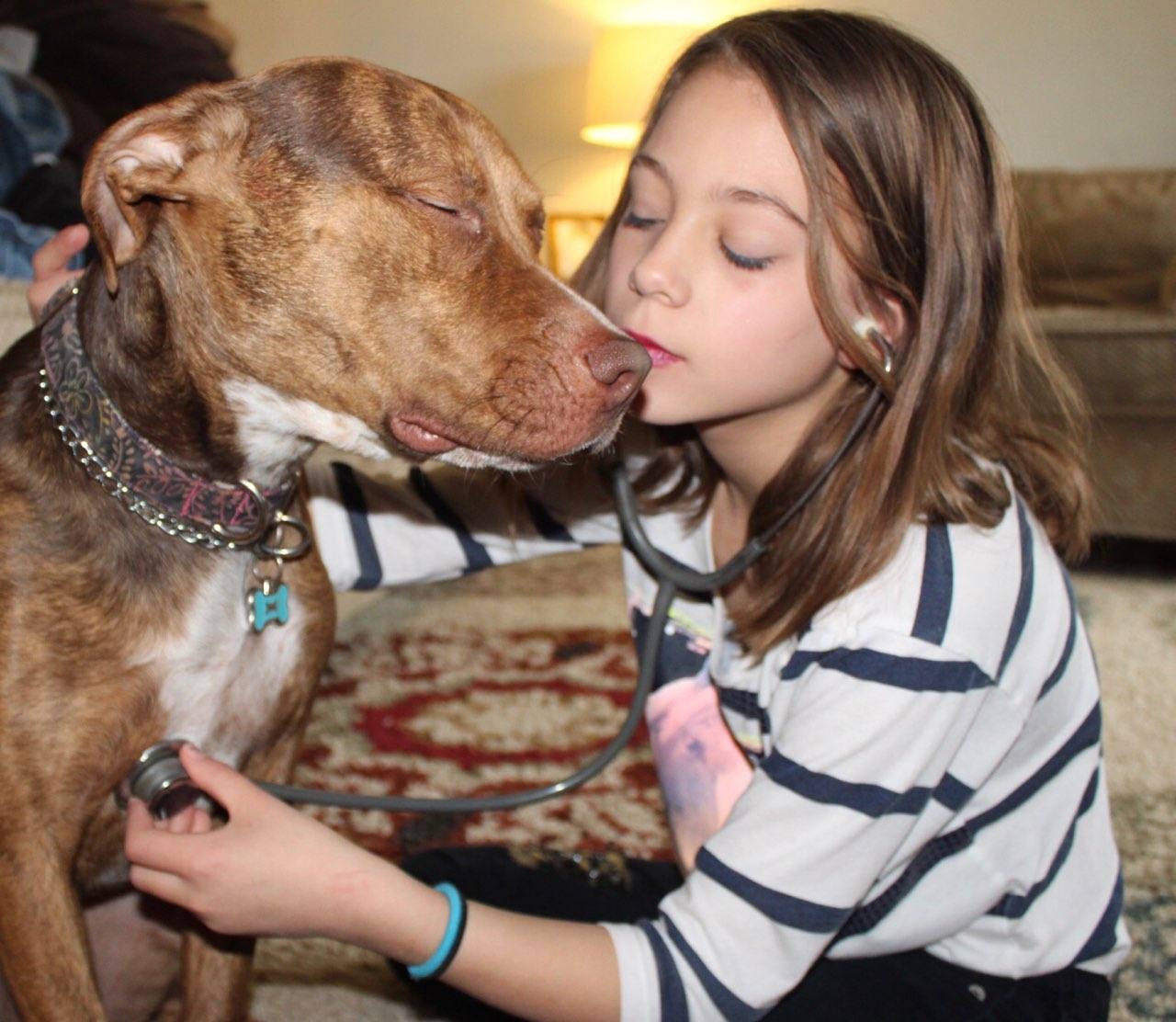
Spotlight on Preventive Health Examinations
Annual visits to the veterinarian are so much more than just vaccines! Pets live longer, healthier lives if they keep fit and see their veterinarian yearly for preventive health exams. Early recognition of diseases is achieved by having a veterinarian perform a complete physical exam, screening blood tests, urine analysis, and microscopic fecal exams annually. Complete preventive health exams involve a visual or manual (feeling and palpating structures) inspection of the entire body. Even though this exam doesn’t take a lot of time, it can reveal hidden problems. An examination begins at the nose and ends at the toes. Let’s go through an exam to see what our veterinarians look for:
Overall Appearance: As patients enter the hospital the technician and veterinary staff are observing your pet’s overall appearance. Things that we observe at a distance include gait (is there a limp), coat condition; nail length, weight, and lesions.
Nose: Visual inspection at the start of the respiratory system to look for abnormalities such as crust or discharge.
Eyes: Visual exam of the eyes includes the cornea (surface of the eye), the internal structure, and tissues surrounding the eyes. Veterinarians can look for any redness, irritation, changes in pupil size, changes in the lens (such as cataracts), adequate tear production, and pressure of the eye to screen for glaucoma.
Oral Exam: Teeth and gums are checked for evidence of dental tartar, gingivitis, periodontal disease, fractured teeth, or abnormal growths in the mouth.
Ears: Veterinarians will begin with a visual inspection of the ear flap and outer ear canal. Continuing the exam we look for discharge, check for odors, hair in the ear canal, and finally an inspection of the tympanic membrane (ear drum) to identify any swelling in the inner ear canal.
Auscultation of the Chest: Next the veterinarian will auscultate (listen with the stethoscope) the chest, listening for normal or abnormal cardiac sounds (such as murmurs or irregular rhythm) and lung sounds.
Palpation of the Abdomen: Many organs can be felt and evaluated for enlargement or abnormal shape. How comfortable the pet is during palpation can alert us to a possible problem area.
Lymph Nodes: When palpating the lymph nodes near the surface of the body the veterinarian is checking for abnormal size. Swollen lymph nodes can be a sign of disease or infection.
Evaluation of the Skeletal System: Feeling and manipulating all joints and bones for signs of swelling, and/or pain. All joints are evaluated for range of motion and the gait is evaluated for any subtle lameness.
Rectal Palpation: This involves evaluating the end of the gastrointestinal system and anal glands for evidence of infection or abnormal growths. Male dogs are screened for enlargement of the prostate gland.
Skin and Coat: Finally the veterinarian looks for evidence of any skin diseases, growths, and external parasites.
For Our Senior Pets
As our pets age, we don’t always recognize the subtle symptoms they may exhibit and commonly can be chalked up to age. Organ function can decrease over time without our pet showing any signs or symptoms of disease. Wellness blood screens and urine panels should be done annually and even biannually in our elderly patients. Trends seen in yearly blood panels can lead veterinarians in diagnosing disease early. Early detection allows us to make changes in the pet’s diet and lifestyle, or prescribe medications if necessary.
Next entry we will take a closer look at routine blood work.





Recent Comments